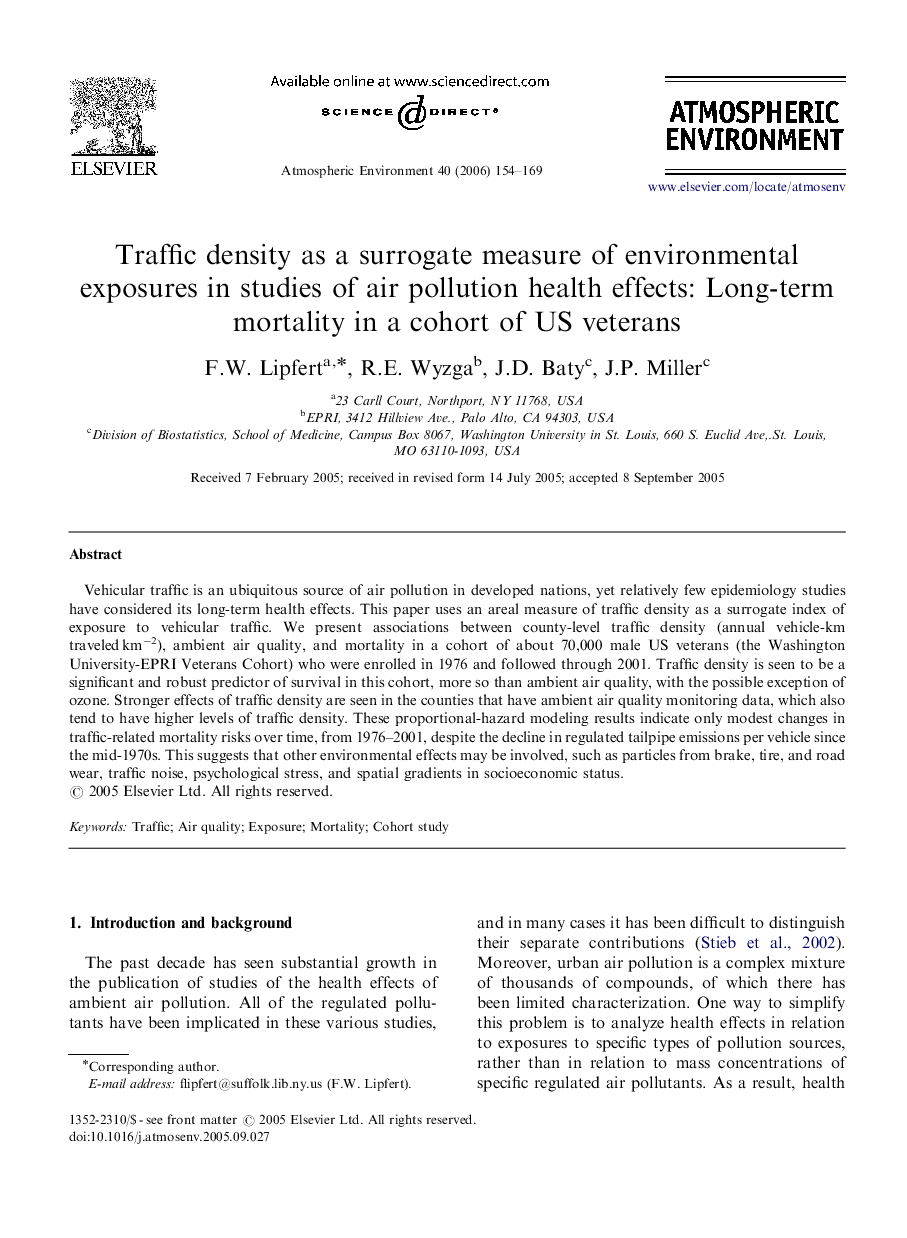| Article ID | Journal | Published Year | Pages | File Type |
|---|---|---|---|---|
| 4443812 | Atmospheric Environment | 2006 | 16 Pages |
Vehicular traffic is an ubiquitous source of air pollution in developed nations, yet relatively few epidemiology studies have considered its long-term health effects. This paper uses an areal measure of traffic density as a surrogate index of exposure to vehicular traffic. We present associations between county-level traffic density (annual vehicle-km traveled km−2), ambient air quality, and mortality in a cohort of about 70,000 male US veterans (the Washington University-EPRI Veterans Cohort) who were enrolled in 1976 and followed through 2001. Traffic density is seen to be a significant and robust predictor of survival in this cohort, more so than ambient air quality, with the possible exception of ozone. Stronger effects of traffic density are seen in the counties that have ambient air quality monitoring data, which also tend to have higher levels of traffic density. These proportional-hazard modeling results indicate only modest changes in traffic-related mortality risks over time, from 1976–2001, despite the decline in regulated tailpipe emissions per vehicle since the mid-1970s. This suggests that other environmental effects may be involved, such as particles from brake, tire, and road wear, traffic noise, psychological stress, and spatial gradients in socioeconomic status.
